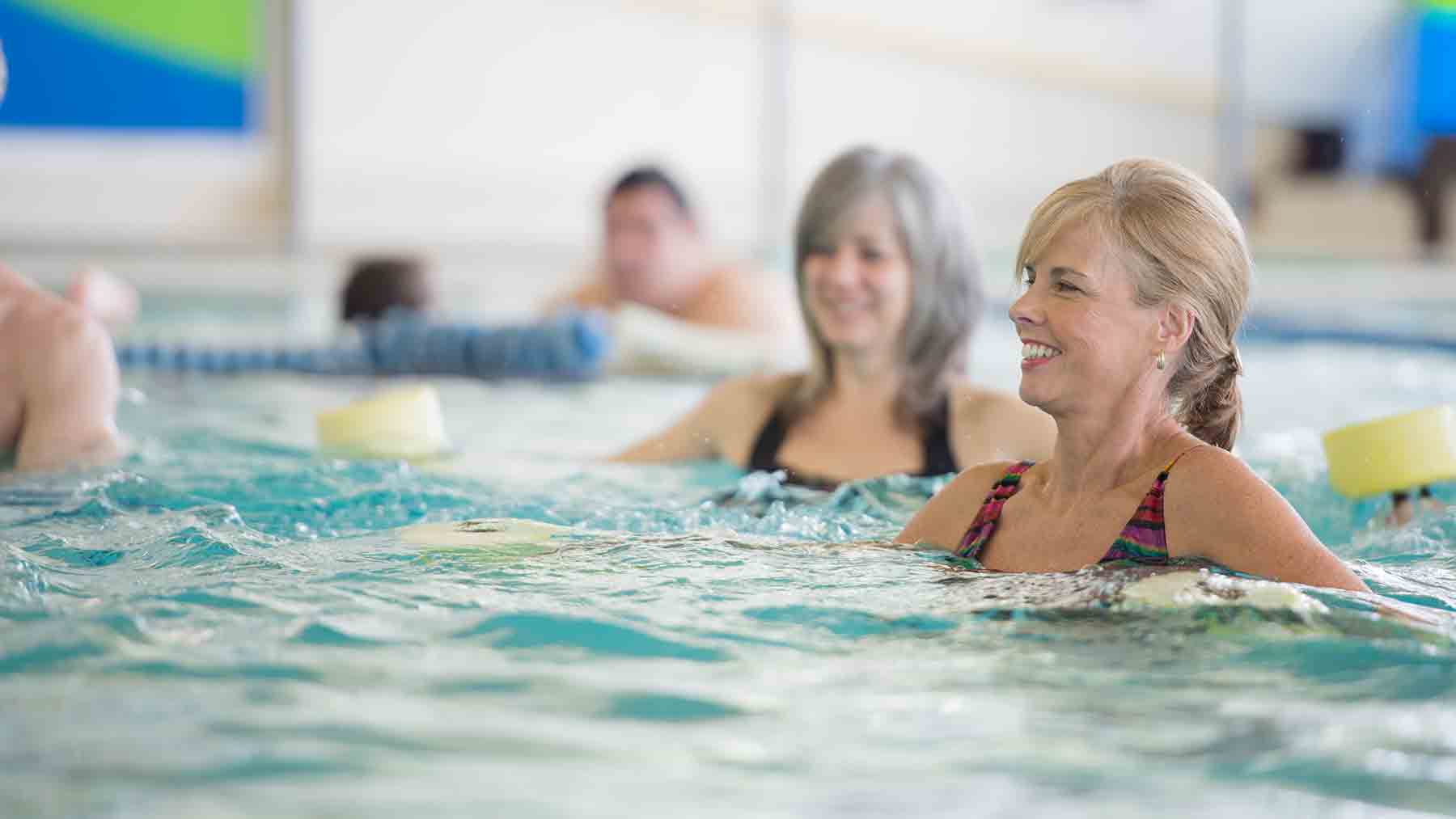Strength training in water is the latest trend. Should you try it?
 Strength training underwater is the newest fitness trend, boasting a low-impact way to boost your heart rate and build muscle. It has a lot of my patients wondering if they should swap their usual workouts for underwater squats and lunges.
Strength training underwater is the newest fitness trend, boasting a low-impact way to boost your heart rate and build muscle. It has a lot of my patients wondering if they should swap their usual workouts for underwater squats and lunges. Exercising in water is often used in rehabilitation and health centers with older people as a way to make exercise more comfortable on arthritic joints. It’s also a way to begin exercising after surgery or injury, when the joint can’t fully tolerate exercises against gravity.
When you put resistance on your muscles during strength training – whether it’s your body weight in a push-up or a barbell in a squat – you trigger muscle protein synthesis and build lean body mass, which boosts your metabolism and the number of calories you burn throughout the day.
Given the effort that it takes to move your body through water, it’s no surprise that research has shown regular swimming improves physical strength, endurance and body composition. In addition, water also supports some of your body weight, so the impact on your joints is less than if you were working out on land.
Working out in the water is also especially beneficial for anyone with an injury, arthritis, back pain or degenerative spine or disc issues who may have a limited ability to exercise. Exercising in the pool is also a good alternative to unload the body when it’s fatigues from intense practices or challenging land-based exercises. It can also enhance recovery.
Here’s the thing: just because it can be beneficial to work out in the water doesn’t mean you should.
The downside to exercising in water is your workout won’t be as intense as it would if you were working out on land. The force produced when we exercise on land is crucial for our ability to strengthen our bones and muscles needed for daily life and sport.
While exercising in the water does have merit and can provide some health benefits, I’d suggest that, if you’re injury-free and can strength train on land, you should continue to do so. A land-based resistance program maximizes strength, balance and bone-loading – which is especially important as we age.


